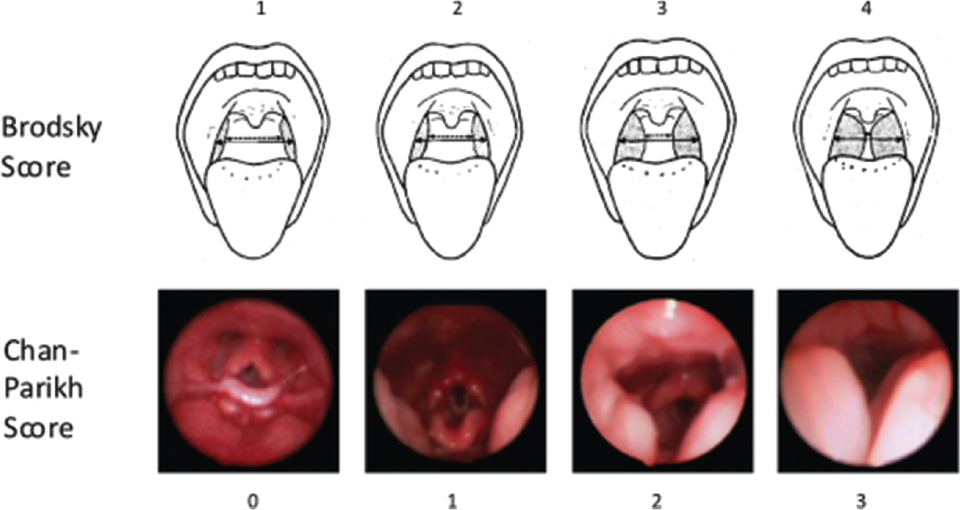Does the degree of lateral pharyngeal wall (LPW) obstruction on pediatric drug-induced sleep endoscopy (DISE) correlate with pre-procedure tonsillar hypertrophy scores on physical examination, and are clinically small tonsils obstructive?
Bottom line
Tonsillectomy alone may not be sufficient at treating obstructive sleep apnea (OSA) in pediatric patients with small tonsils. There was a positive correlation between Brodsky Score and DISE LPW score, and the majority of children with sleep-disordered breathing with a Brodsky score of 1 did not demonstrate LPW obstruction.
Explore This Issue
August 2017Background: Adenotonsillectomy is the recommended surgical treatment for pediatric OSA, but children with small tonsils may not experience the same benefit and may have other sources of obstruction contributing to their OSA, which could lead to residual disease. This observation has led to increased interest in the role of DISE to evaluate airway obstruction.
Study design: Retrospective review of 115 patients who underwent DISE at a single pediatric tertiary care center between Jan. 1, 2011, and March 30, 2016.
Setting: Seattle Children’s Hospital.
Synopsis: More than half of the children had grade 1 tonsils, and the majority of those had a lateral pharyngeal wall (LPW) score of 0. Spearman correlation analysis identified similar but weak positive correlation coefficients between tonsil size and apnea-hyponea index (AHI) score, and LPW and AHI scores. There was no statistically significant correlation between oxygen nadir and either tonsil size or LPW score. Fifty-one children had significant comorbid conditions; among these, there was no correlation between tonsil size and AHI score. There was a moderate correlation between tonsil size and AHI score among children without comorbidities. There was a moderate positive correlation between Brodsky score and LPW score, and linear regression modeling determined that for every 1-point increase in tonsil score, there was a 0.7-point increase in LPW score. There was no difference in correlation of tonsil size and LPW obstruction between children with and without comorbid conditions.

Comparison of Brodsky physical exam score and representative images of Chan-Parikh scoring for lateral pharyngeal wall domain
Credit: Copyright 2017 The American Laryngological, Rhinological and Otological Society, Inc.
Limitations included the study’s retrospective nature, potential institutional differences in DISE technique, a risk of bias due to limited blinding, and a likelihood that more patients would have significant comorbidities due to the tertiary care location.
Citation: Miller C, Purcell PL, Dahl JP. Clinically small tonsils are typically not obstructive in children during drug induced sleep endoscopy. Laryngoscope. 2017;127:1943–1949.